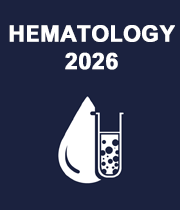Title : Pre-hypertension in Sickle Cell Disease (SCD) as a risk factor for emergency department visits and hospitalizations.
Abstract:
Introduction: While new approaches in treatment have improved diagnosis and management of sickle cell disease (SCD) over the last few decades, many patients still have severe complications leading to repeat ED visits and hospitalizations. Better risk stratification can help to reduce health care resource utilization included ambulatory, emergency department (ED), and inpatient hospitalizations. Individuals with prehypertension (blood pressure, 120– 139/80–89 mmHg) and hypertension (blood pressure ≥140/90) have higher rates of left ventricular hypertrophy than normotensive individuals of the same age. Multiple studies have demonstrated increased rates of cardiovascular disease and mortality in young people with hypertension. We explored the role of pre-hypertension in African American Hgb SS sickle cell patients in order to risk stratify sickle cell disease (SCD) and its impact on ED visits and hospitalizations.
Methods: This retrospective review included 100 African American hgb SS sickle cell patients with SCD from 2021-2022 at a single urban, US-based safety-net medical center. Information extracted included demographics age, sex, BMI, baseline hemoglobin, baseline blood pressure, SCD characteristics, and number of ED visits and admissions within the past 12 months. 25 patients were excluded from the final analysis for other hemoglobinopathies. Deidentified data was compiled in a descriptive table to determine whether blood pressure affected the hospital visits/admissions. Patients with Hgb > 10 and BP <120/80 served as the controls from which relative risk (RR) of ED visits/hospital admissions was compared with to determine the risk that systolic, diastolic and pre-hypertension BP as a whole played in the risk of ED visits/ hospital admissions.
Results: Our cohort included 75 African American patients with Hb SS genotype, 100% publically insured, average age of 35 (range 17-74), with 39 Females, and 36 Males, with an average BMI of 25, average baseline hemoglobin of 9.17. The average # of ED visits/ hospital admissions was 4.86 within the past 12 months. Severity of anemia was the largest risk factor for admissions with hgb <10 leading to 5.86 admissions vs 2.42 for hgb >10. Within the cohort of patients with hgb >10, normotensive patients had 1.16 admissions/year. Prehypertensive patients (BP > 120/80) had 9.75 admissions/year. For patients with HTN, there were 14.75 admissions. For elevated systolics > 120 OR elevated diastolics > 80, the relative risk (RR) for hospital admissions ranges from 2.4 -7.9 based on the hemoglobin. For, prehypertensive patients, the relative risk (RR) for hospital admissions is as high as 8.4 for anemic patients. Hypertensive patients with hgb < 10, have the highest RR of 12.7.
Conclusions: Patients with hgb < 10 had overall more hospital visits/admissions than those with hgb > 10. For both cohorts, the relative risk of hospital visits/admissions were higher for patients with either elevated systolics, diastolics or pre-HTN consistently. Pre-HTN patients with hgb < 10 had an almost 10x relative risk of admissions compared to control group of normotensive patients with hgb > 10. Results are limited due to small sample size but consistently shows that pre-HTN in this overall young cohort of patients is a risk factor for ED visits and admissions.
Audience Takeaway:
- Pre-HTN SCD patients with hgb < 10 had an almost 10x relative risk compared to control group of normotensive patients with hgb > 10 of ED visits and hospital admissions.
- Screening for pre-hypertension can alert physicians to patients who may be at higher risk for repeat admissions, either from pain perspective or disease control perspective.
- Further research is warranted on identifying whether blood pressures are predictive risk factors for admission in SCD as adequate attention and treatment may reduce acute care utilization in this population.



